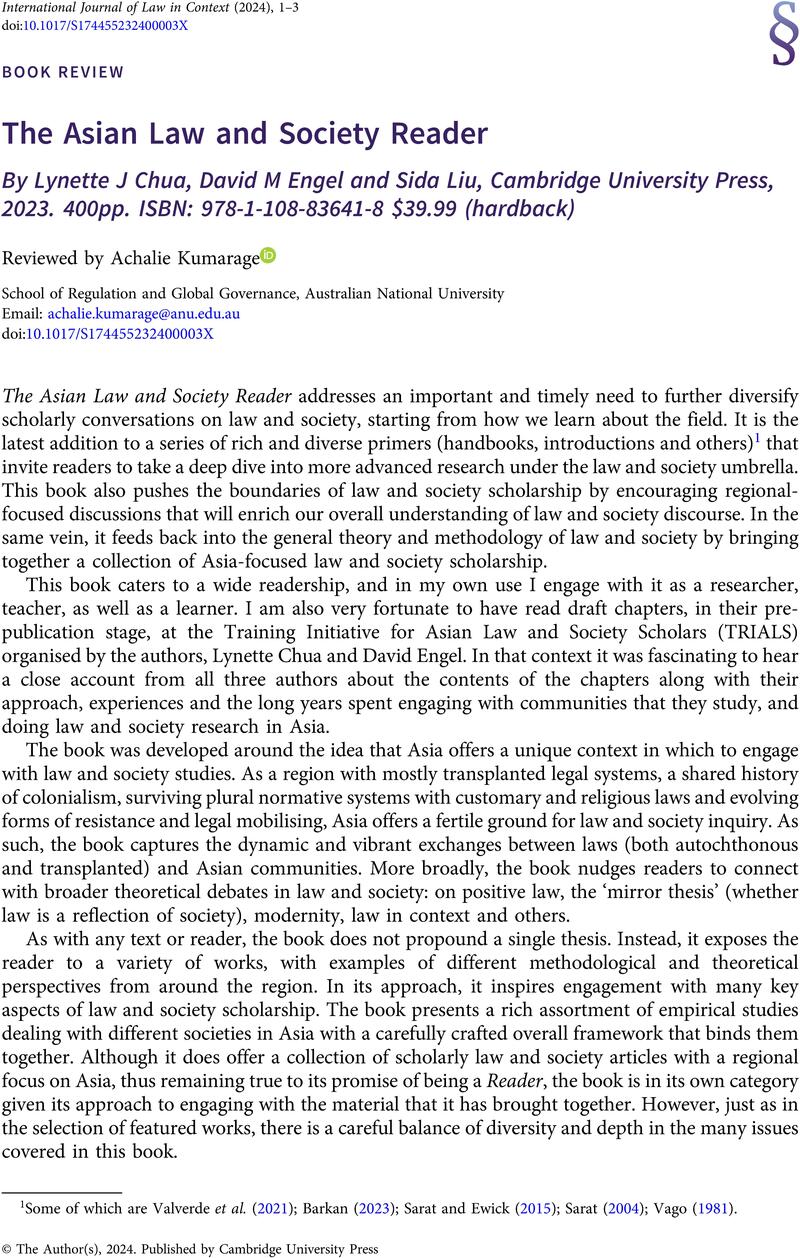No CrossRef data available.
Article contents
The Asian Law and Society Reader By Lynette J Chua, David M Engel and Sida Liu, Cambridge University Press, 2023. 400pp. ISBN: 978-1-108-83641-8 $39.99 (hardback)
Review products
The Asian Law and Society Reader By Lynette J Chua, David M Engel and Sida Liu, Cambridge University Press, 2023. 400pp. ISBN: 978-1-108-83641-8 $39.99 (hardback)
Published online by Cambridge University Press: 16 February 2024
Abstract
An abstract is not available for this content so a preview has been provided. Please use the Get access link above for information on how to access this content.

Information
- Type
- Book Review
- Information
- International Journal of Law in Context , Volume 20 , Special Issue 2: Facets of Rule of Law Backsliding , June 2024 , pp. 293 - 295
- Copyright
- © The Author(s), 2024. Published by Cambridge University Press
References
Barkan, S (2023) Law and Society: An Introduction. Routledge, 3
rd edn.10.4324/9781003288480CrossRefGoogle Scholar
Chua, L, Engel, DM and Liu, S (2023) The Asian Law & Society Reader: Motivations and Features, Frontiers of Socio-Legal Studies, 1 March. Available at: https://frontiers.csls.ox.ac.uk/asian-law-society/.10.1017/9781108864824CrossRefGoogle Scholar
Sarat, A and Ewick, P (eds) (2015) The Handbook of Law and Society. Wiley.10.1002/9781118701430CrossRefGoogle Scholar
Valverde, M et al. (eds) (2021) The Routledge Handbook of Law and Society. Routledge.10.4324/9780429293306CrossRefGoogle Scholar

